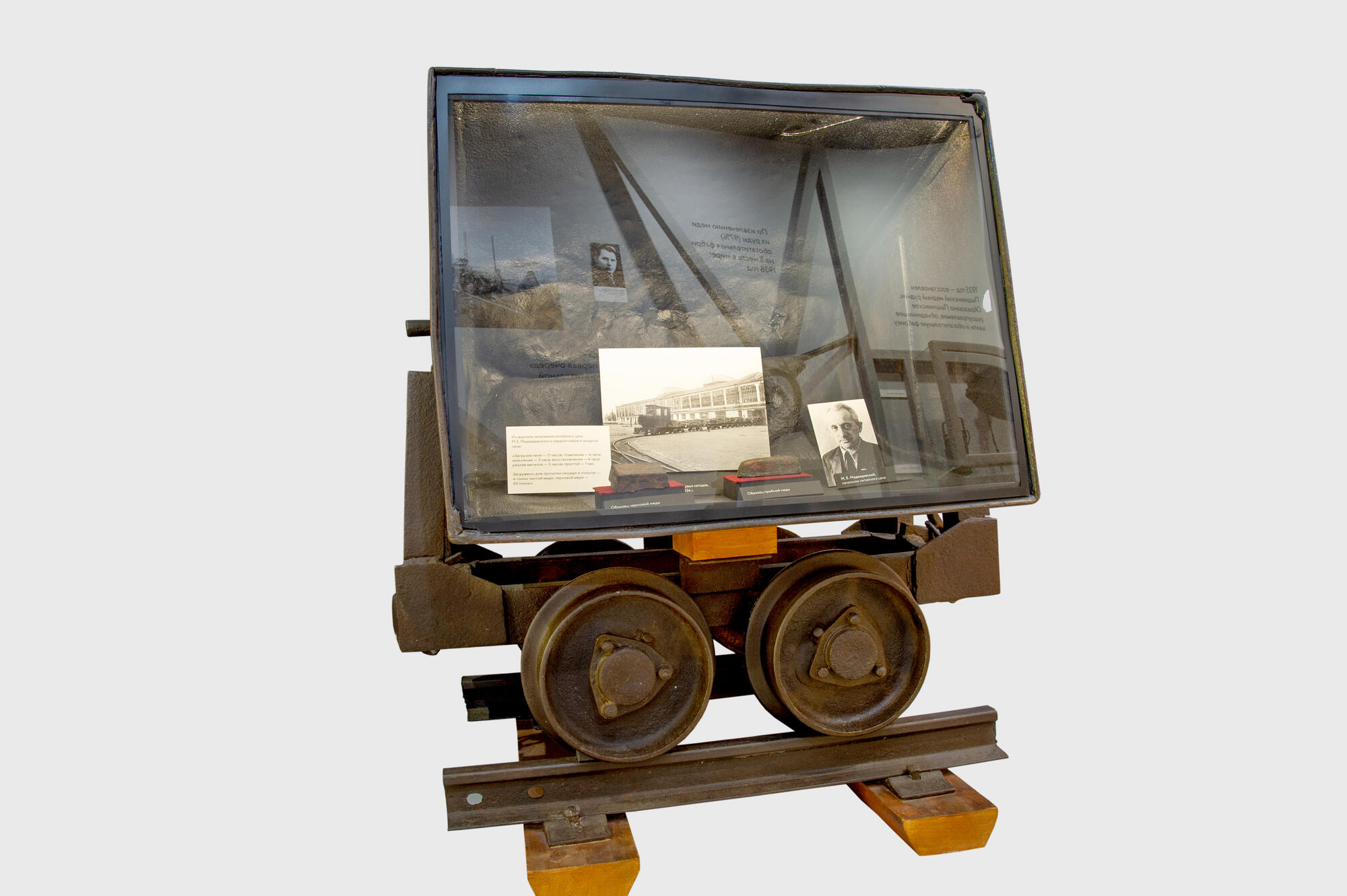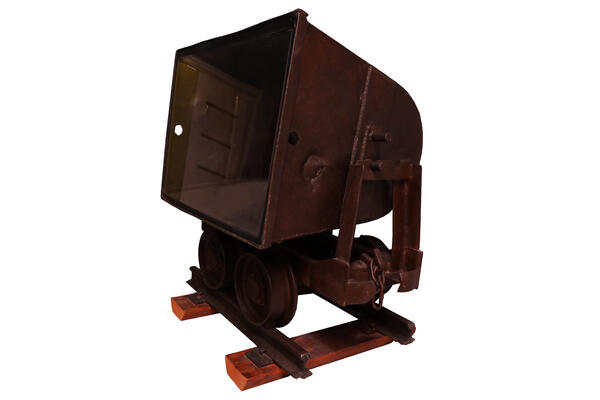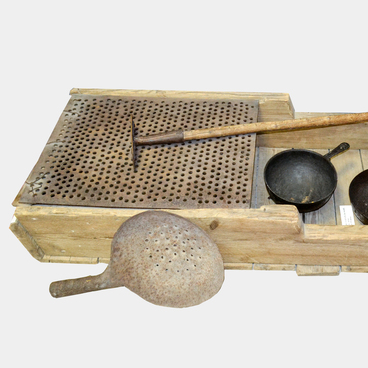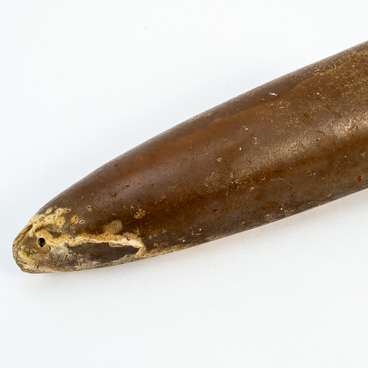The trolley from the Verkhnyaya Pyshma Historical Museum served as freight and passenger transport at mines. Miners used the trolleys to move through underground and surface mines, and transport the minerals outside. Similar trolleys were used at the Pyshminsko-Klyuchevsky copper mine.
Since the 15th century, miners built corduroy roads. They placed logs in rows and stacked them tightly together. The Russian word for the logs — ‘lezhny’ –was the origin for the name of this type of road — ‘lezhnevka’.
The trolleys had wooden wheels. First, they were pushed by the miners, and later by horses. Corduroy roads were built at mine sites in Russia and Western Europe. In Russian, the trolleys were nicknamed ‘dogs’ since they made a loud clanging sound.
Initially, any logs could be used to build corduroy roads. However, in the 16th century people began to pick out the smooth logs and lay them in the ground. These ‘rails’ were faster, so the horse could carry more weight.
In 1680, an innovative wooden road appeared in England. It led from the open mines of Newcastle to the port on the Tyne River. Trolleys were used to bring coal from mines, load it onto ships and send to other countries.
The new road used the force of gravity instead of animals. The tracks made use of the relief terrain. From the mine to the port, the road went down the mountain, so the carts loaded with coal rolled on the rails themselves. In each trolley, a trolleyman controlled the speed with the hand brake, while a horse was running behind on a leash. When the empty cart had to be returned uphill, it was pulled by the horse.
The rail track developed along with the trolley design — it became a light open car, without a roof and with a small capacity. It had space for about six tons of coal and up to 13 tons of ore.
In the late 19th century, as factories grew larger and the number of miners drastically increased, there appeared a need for passenger carts. These carts are still used in mines: some have the folding bottom and sides, and some have a roof. There are different types based on their length, width, the diameter of wheels and capacity.
Since the 15th century, miners built corduroy roads. They placed logs in rows and stacked them tightly together. The Russian word for the logs — ‘lezhny’ –was the origin for the name of this type of road — ‘lezhnevka’.
The trolleys had wooden wheels. First, they were pushed by the miners, and later by horses. Corduroy roads were built at mine sites in Russia and Western Europe. In Russian, the trolleys were nicknamed ‘dogs’ since they made a loud clanging sound.
Initially, any logs could be used to build corduroy roads. However, in the 16th century people began to pick out the smooth logs and lay them in the ground. These ‘rails’ were faster, so the horse could carry more weight.
In 1680, an innovative wooden road appeared in England. It led from the open mines of Newcastle to the port on the Tyne River. Trolleys were used to bring coal from mines, load it onto ships and send to other countries.
The new road used the force of gravity instead of animals. The tracks made use of the relief terrain. From the mine to the port, the road went down the mountain, so the carts loaded with coal rolled on the rails themselves. In each trolley, a trolleyman controlled the speed with the hand brake, while a horse was running behind on a leash. When the empty cart had to be returned uphill, it was pulled by the horse.
The rail track developed along with the trolley design — it became a light open car, without a roof and with a small capacity. It had space for about six tons of coal and up to 13 tons of ore.
In the late 19th century, as factories grew larger and the number of miners drastically increased, there appeared a need for passenger carts. These carts are still used in mines: some have the folding bottom and sides, and some have a roof. There are different types based on their length, width, the diameter of wheels and capacity.



